Special Joint Newsletter
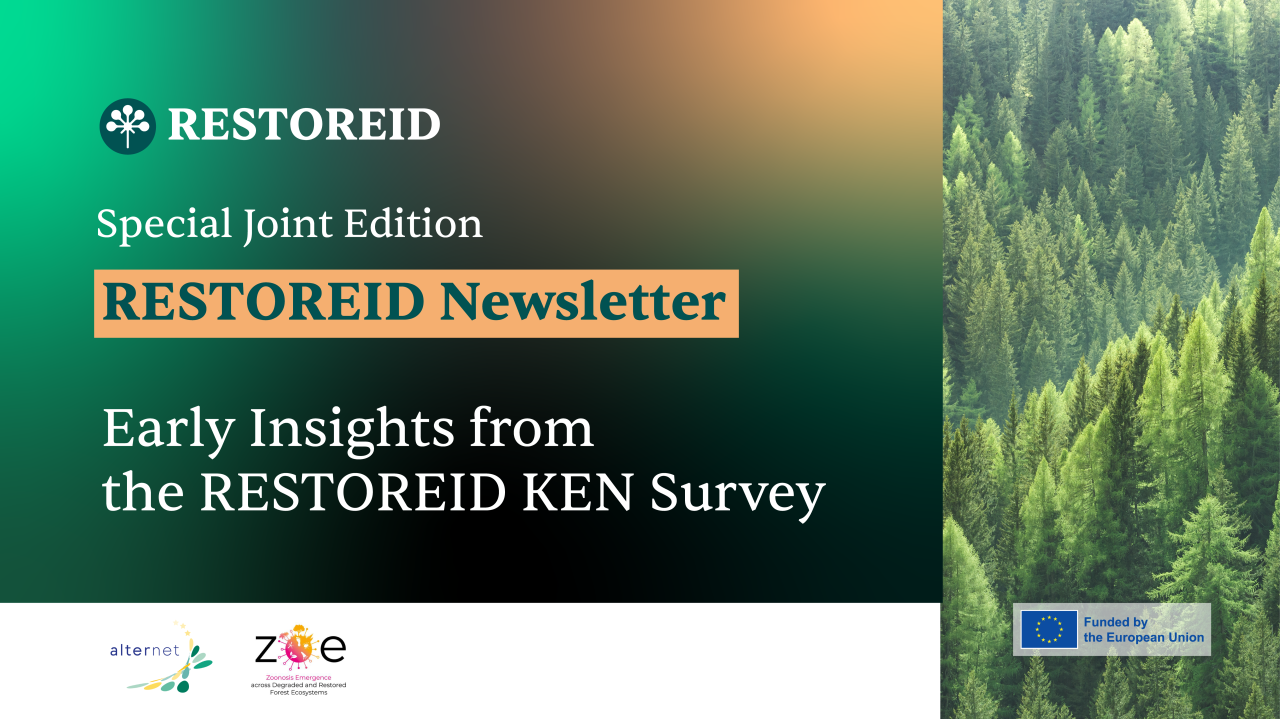
Needs and Wants from Stakeholders in Biodiversity, Restoration, and Zoonotic Disease Prevention (KEN Survey)
As part of the Horizon Europe HORIZON-CL6-2023-BIODIV-01-17 call, several EU-funded projects—including RESTOREID and ZOE Project Horizon Europe— as well as the Alternet Association, have joined forces to explore how a future Knowledge Exchange Network (KEN) can best serve stakeholders working at the interface of biodiversity, restoration, and zoonotic disease prevention.
The first step? Listening to you.
Thanks to 370+ responses, our survey is an accurate depiction of what stakeholders expect from the future KEP, and we couldn’t wait to share some of our initial findings with you:
Who Responded?
This was a truly global consultation. Responses came from every continent:
- Countries represented: 70+ across Africa, Europe, Asia, South America, North America, and Oceania
- Most represented country: Kenya (approx. 25 responses)
- European participation included: United Kingdom (13), Spain (11), Portugal (10), France (8), Belgium (7), Germany (6), Czech Republic (4), Italy (3), Netherlands, Switzerland, Slovakia, and Malta, among others.
A wide range of stakeholders participated, including NGOs, researchers, EU project partners, public authorities, international organisations, and local community leaders.
Projects represented in the survey include:
RESTOREID, ZOE Project Horizon Europe, IDAlert, WaterLANDS, BCOMING, BEPREP-eu, BIONEXT Project, CLIMOS Project, Nestler-Project, REST-COAST, MERLIN, FoSTA-Health Project, SUPERB project, URBANE Project, and CATALYSE Project EU.
What Did We Learn?
1. High Demand for Policy Engagement & Knowledge Sharing
Respondents emphasised the importance of international policy advocacy (e.g., IUCN, OHHLEP, Nature4Health) and platforms that support the sharing of good practices and lessons learned.
2. Capacity Building and Training Are Top Priorities
Stakeholders (particularly from the Global South) stressed the need for training, peer-learning, mentoring, and support for community-led programmes such as afforestation, agroecology, and health surveillance.
3. Technology, Tools & Funding Support Are Essential
There is interest in applying emerging technologies like AI and machine learning to monitor biodiversity, map restoration progress, and enhance conservation effectiveness. The need for sustainable funding was frequently highlighted.
4. Further and Better Monitoring & Evaluation are Needed
Stakeholders want stronger metrics for ecological and social impact, and better integration of field data into decision-making frameworks.
5. Collaborative Leadership & Regional Ownership
From Bangladesh to Colombia, several actors have shared with us their readiness to take on leadership roles and engage in cross-sector collaborations that span research, policy, and local action.
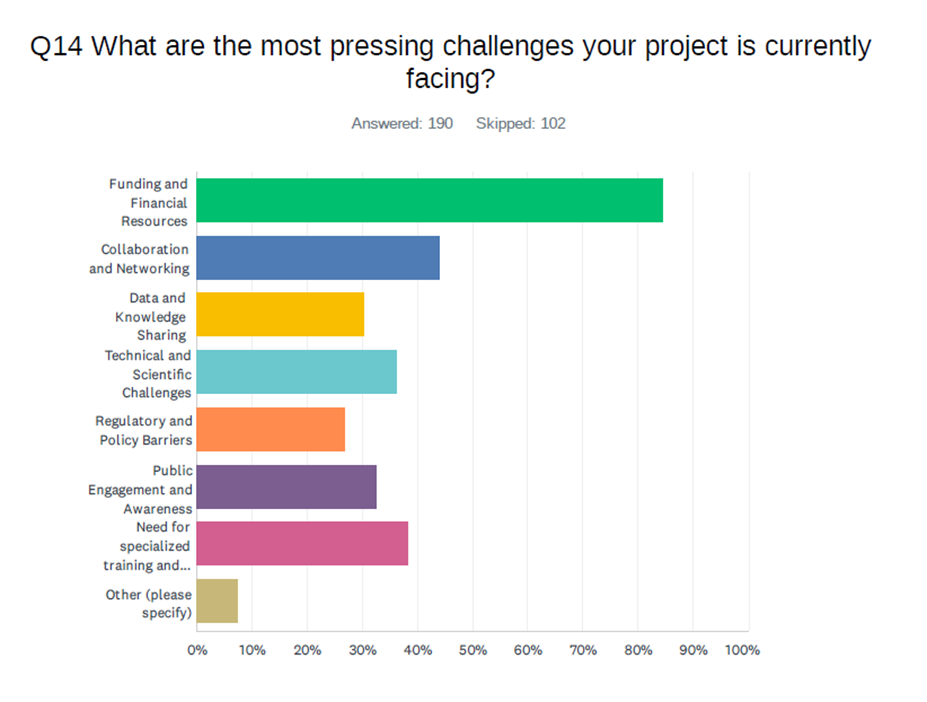
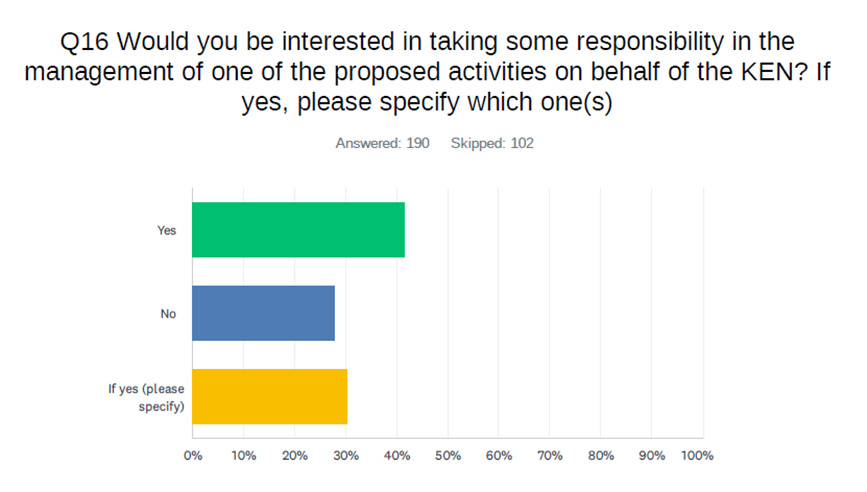
What Should the KEP Do?
Stakeholders identified specific ways the KEP can help:
- Provide structured access to knowledge: data, reports, protocols, case studies, and toolkits
- Enable networking spaces and expert groups for co-creation and exchange
- Support access to funding opportunities, technical support, and decision-making tools
- Facilitate training programs, mentoring, and community engagement
- Enhance science-policy-practice integration through real-time feedback loops
- Build bridges between EU and international actors, ensuring inclusivity and shared ownership
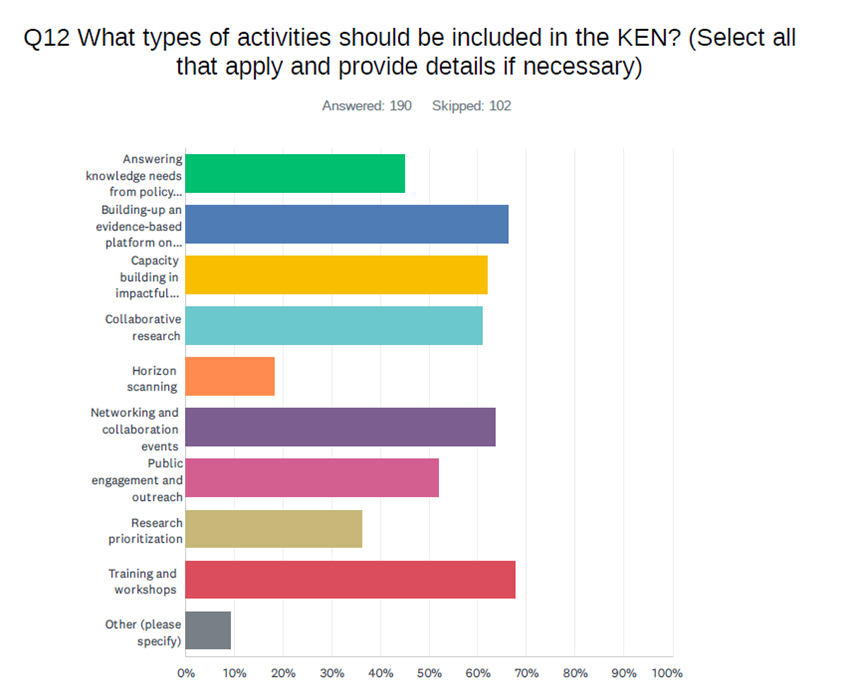
What Happened After the Survey?
Following the survey, a series of targeted consultation meetings were held with key experts to validate results and deepen our understanding. These discussions confirmed the value of stakeholder input, clarifying the overlapping roles of existing platforms and networks.
Our conclusion? There is significant interest, but limited awareness of existing resources. From EU-based initiatives like BioAgora Project, BISE, Biodiversa+, PANORAMA Project, Alternet, Eklipse, and the Knowledge Centre for Biodiversity, to international networks focused on restoration, data sharing, and finance, many valuable resources remain underused.
One more reason why a well-connected and accessible KEP is not just a good idea: it’s urgently needed.
What are the Next Steps?
We are now co-designing the future KEP based on your input. A platform that fosters learning, connects stakeholders, and supports transformative change in biodiversity and public health. The KEP is in motion, and with your continued engagement, it will soon become a reality.
As a first step, ZOE is helping put stakeholders and researchers involved at the biodiversity-health nexus on the map. We have created a web map to list projects addressing the links between biodiversity and emerging infectious diseases, fostering data sharing and knowledge exchange. The map plots active research sites around the globe, provides filters to address specific research areas, and facilitates the dissemination of results and outputs. You can visit it at www.biodiv-health-kep.com.
Don’t hesitate to contact us if you'd like to see your project on the map!
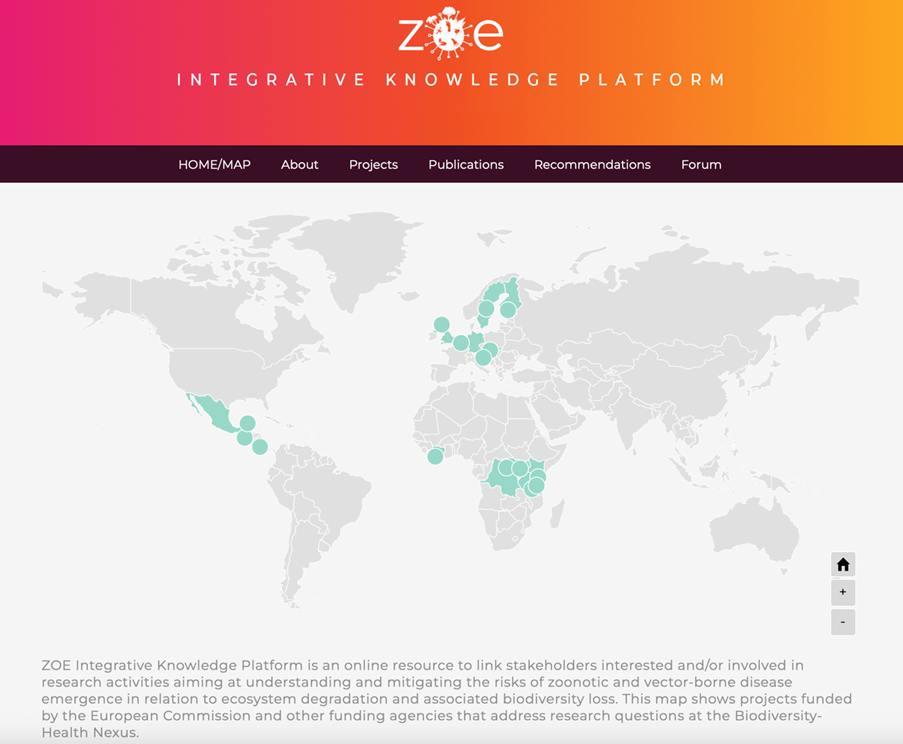
Thank you for being part of this journey.
– The RESTOREID, ZOE Project Horizon Europe, Alternet (and partners) Team

